NFTs
Company sells Indigenous land in Amazonas as NFTs without community’s knowledge
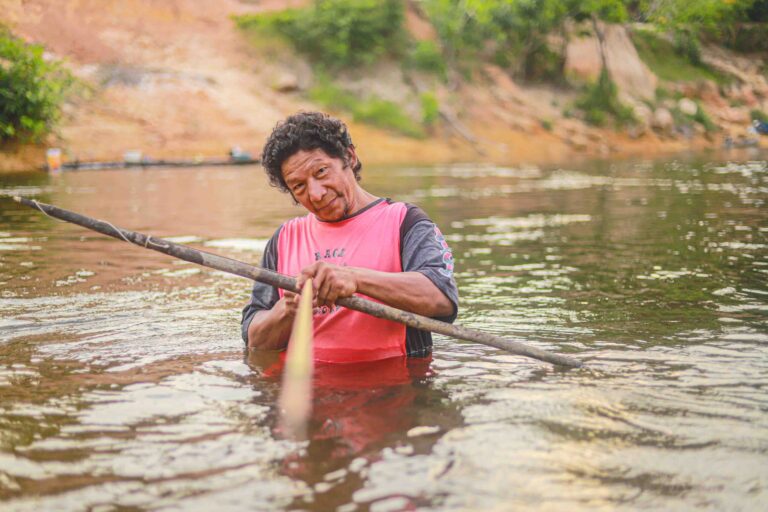
- Areas of the Apurinã territory in the Lower Seruini area, in southern Amazonas state, were sold by Nemus under an NFT project that promises to preserve the forest and generate carbon credits.
- Brazil’s Federal Prosecution Service recommended suspending the project in December 2022, but a story by InfoAmazonia showed that negotiations continue on the internet; plots in an Indigenous land with its demarcation process underway are traded as NFTs for $17-603.
- Indigenous communities were not properly consulted about the company’s plans and are now calling for government action.
- Nemus told prosecutors that the area was not on “a properly demarcated Indigenous land” and therefore the company understood that “no article of ILO 169 convention on consultation applies.”
On their third day traveling on the Purus River Basin in southern Amazonas, InfoAmazonia reporters landed in the village of Penedo, on the banks of the Seruini Stream. For centuries, reports of persecution, massacres, torture, experiences of slavery and struggle for land have marked the history of the Apurinã Indigenous people, who took refuge in the forest, far away from their tormentors. Now, the threat is invisible: Their lands by the Seruini Stream are being sold on the internet as NFTs (non-fungible tokens) by Nemus.
The company said it acquired 41,000 hectares (101,313 acres) of an area that is part of the Lower Seruini/Lower Tumiã Indigenous land, whose demarcation process is underway. The area was divided into plots of different sizes, which have been sold on the internet since March 2022, with the promise of preserving the Amazon. Each NFT represents a portion of the territory, where Nemus still hopes to exploit 200,000 Brazil nut trees and generate carbon credits.
We were already getting off the boat when Chief Kaiaxi made himself visible on the other bank of the stream, wielding his bow and arrow and showing that he is always ready to react. But he was actually after food: “I’ve been trying to catch this tucunaré [peacock bass] for two days, man!”
The chief said he was not aware that plots of land in his village had been sold on the internet, but he remembers that Nemus was in the area claiming to own the land. The company promised to develop projects with Indigenous people, creating jobs and promoting improvements in the villages, but always ignoring the recognition of their traditional territory.
In December 2022, the Federal Prosecution Service (MPF) recommended the suspension of Nemus’ project — a view shared by Brazil’s National Foundation of Indigenous Peoples (FUNAI). But none of the agencies knew the company had sold parts of the territory as NFTs, much less that they were still being traded, as InfoAmazonia found out.
In September, our team visited the villages of Penedo, Kamarapa, Maloca and Bom Jesus in the Lower Seruini/Lower Tumiã and Marienê Indigenous lands, which are directly impacted by the project announced by Nemus.
Penedo village, in the Lower Seruini/Lower Tumiã Indigenous land. Image courtesy of Ramon Aquim/InfoAmazonia.
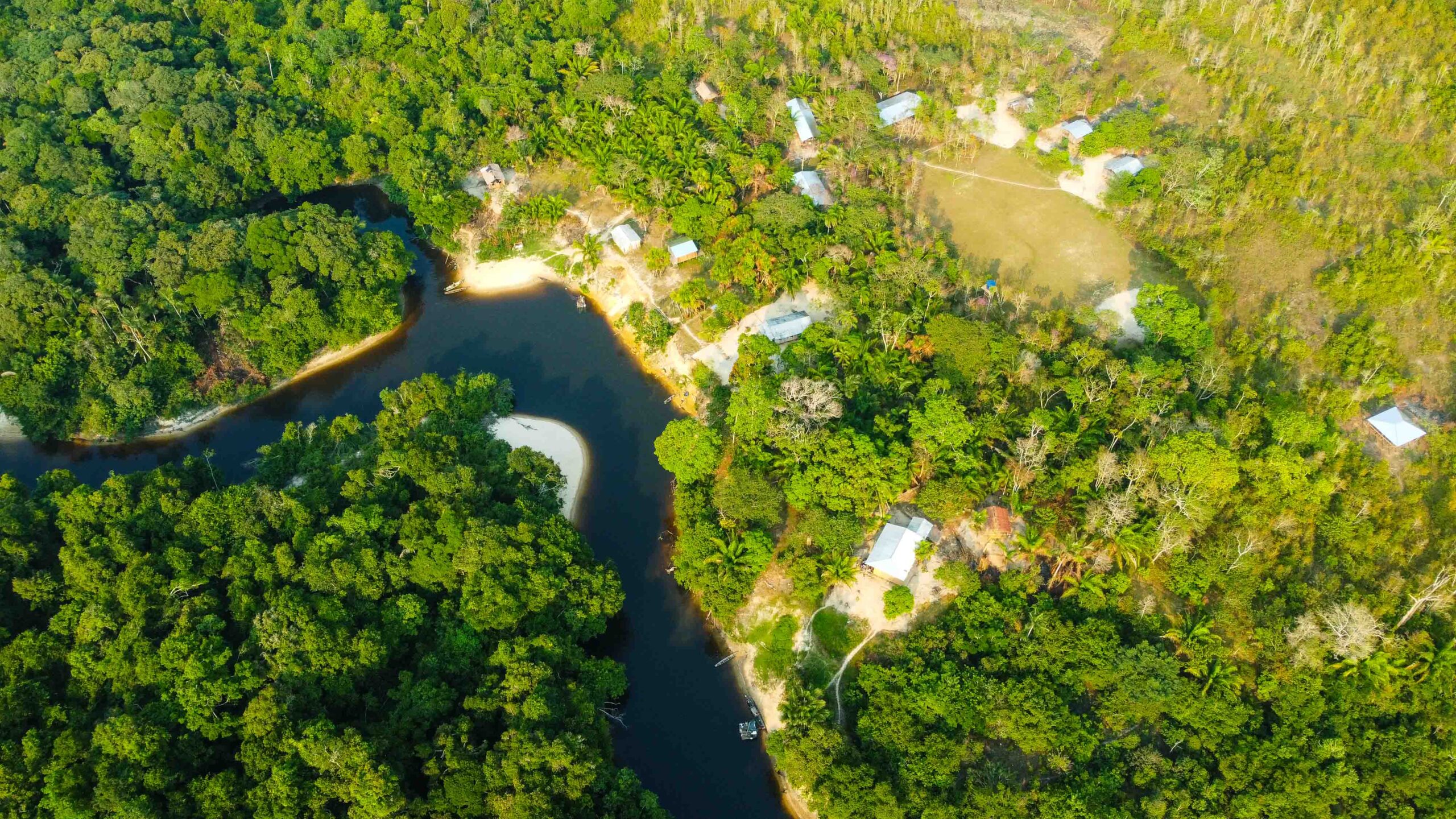 Kamarapa village, in the Lower Seruini/Lower Tumiã Indigenous land. Image courtesy of Ramon Aquim/InfoAmazonia.
Kamarapa village, in the Lower Seruini/Lower Tumiã Indigenous land. Image courtesy of Ramon Aquim/InfoAmazonia.
The reporters found 1,482 areas in the Apurinã Indigenous land registered as NFTs, which are digital certificates of ownership of unique (non-fungible) assets such as works of art, collectibles or properties. In this case, buyers make virtual purchases of plots in the territory, which they can sell to others anytime. It works like a stock exchange. NFT prices vary according to the prices of encrypted virtual money — cryptocurrencies — and the value of the environmental asset that is supposed to be contributing to preserve the forest. At least 665 clients purchased forest land plots and continue trading them as NFTs on specialized platforms.
According to Nemus, NFT holders can navigate the area they acquired and detect wildlife or environmental threats, monitoring and auditing the conservation of the area.
The timber business
Nemus said it purchased the land from Manasa Madeireira Nacional S.A. (Manasa) and that its project is not located on Indigenous lands. It also claimed the mission of its NFTs was “forest conservation.”
Manasa has been on the list of the biggest Amazon deforesters and has been charged with environmental crimes in 35 public civil actions.
The areas offered by Nemus as NFTs range from 0.25-81 hectares (0.6-200 acres). The project also includes the exploitation of 200,000 Brazil nut trees in the area the company claims to own, with a processing plant to export the product using Indigenous labor. There are also plans for building roads and landing strips as well as mechanizing harvesting.
Furthermore, according to the company, project investors can use the areas to generate carbon credits. At no point has Nemus presented itself as a carbon credit company, but it has guaranteed this possibility to so-called “sponsors” — customers who get the largest shares of NFTs.
Under the project’s budget, Nemus even purchased a boat for the Amazonas State Police in the municipality of Pauini to improve security in the region and prevent invasions of NFT areas. The Indigenous people received brush cutters from the company to open paths to chestnut groves.

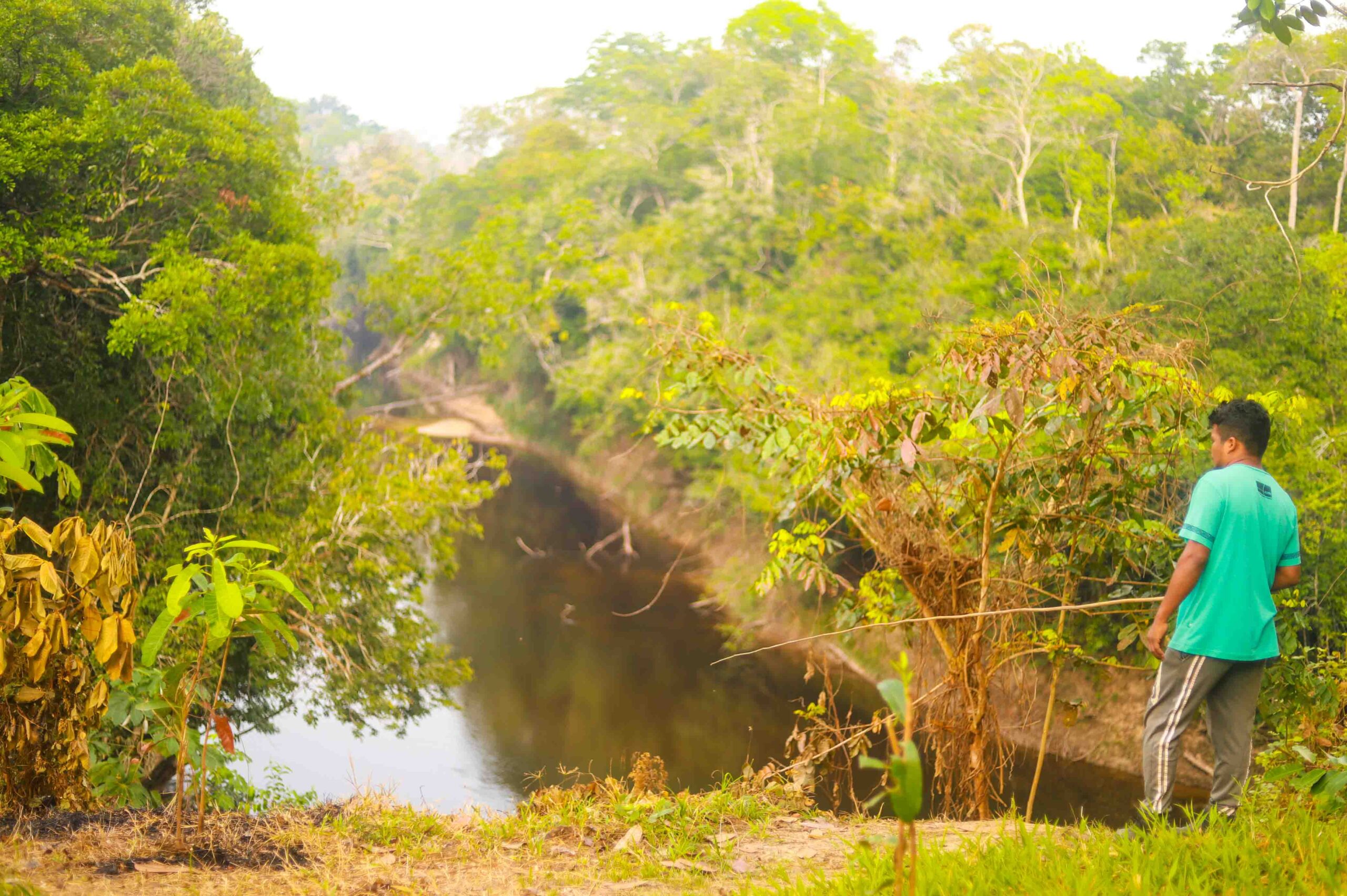 The Penedo village community is the most affected by Nemus’ project. Image courtesy of Ramon Aquim/InfoAmazonia.
The Penedo village community is the most affected by Nemus’ project. Image courtesy of Ramon Aquim/InfoAmazonia.
Nemus’ businesses are associated with European investors and ASF BRAZIL LTD, a London-based holding company founded by Italian businessman Maurizio Totta. In Brazil, Totta is a partner of Pedro Ruhs da Silva and Flávio Meira Penna, who appear as owners of Nemus and other companies in partnership with ASF. The group’s main investments in the Amazon are focused on timber extraction, with the recovery of bankrupt or indebted companies.
In an interview on American TV in the Break It Down Show, Nemus’ founder Meira Penna said the Indigenous people “are sort of like squatters” in the areas acquired by Nemus, but he stated that “they’ll live there forever” and “they will jump to the digital world very quickly.”
In the video, which can be seen in full on YouTube, the businessman details his NFT project in the area claimed by the Indigenous people. The deal is meant to raise up to $5 million, with NFTs selling for $150-$51,000. With that money, Nemus would buy more areas in the region to launch more NFTs, as explained in the video.
In addition to Manasa, Meira Penna also acquired a timber company, Laminados Triunfo, in Acre state and exported the product to the U.S. In April, the company was the target of a “timber laundering” investigation by the Brazilian Institute of the Environment and Renewable Natural Resources (IBAMA).
Indigenous people were not consulted
The land traditionally occupied and claimed by the Apurinã for decades was only recognized by FUNAI in 2017, when identification studies began, but the demarcation process was never completed. “What we want is for our territory to be demarcated so we feel safer,” Chief Kaiaxi said.
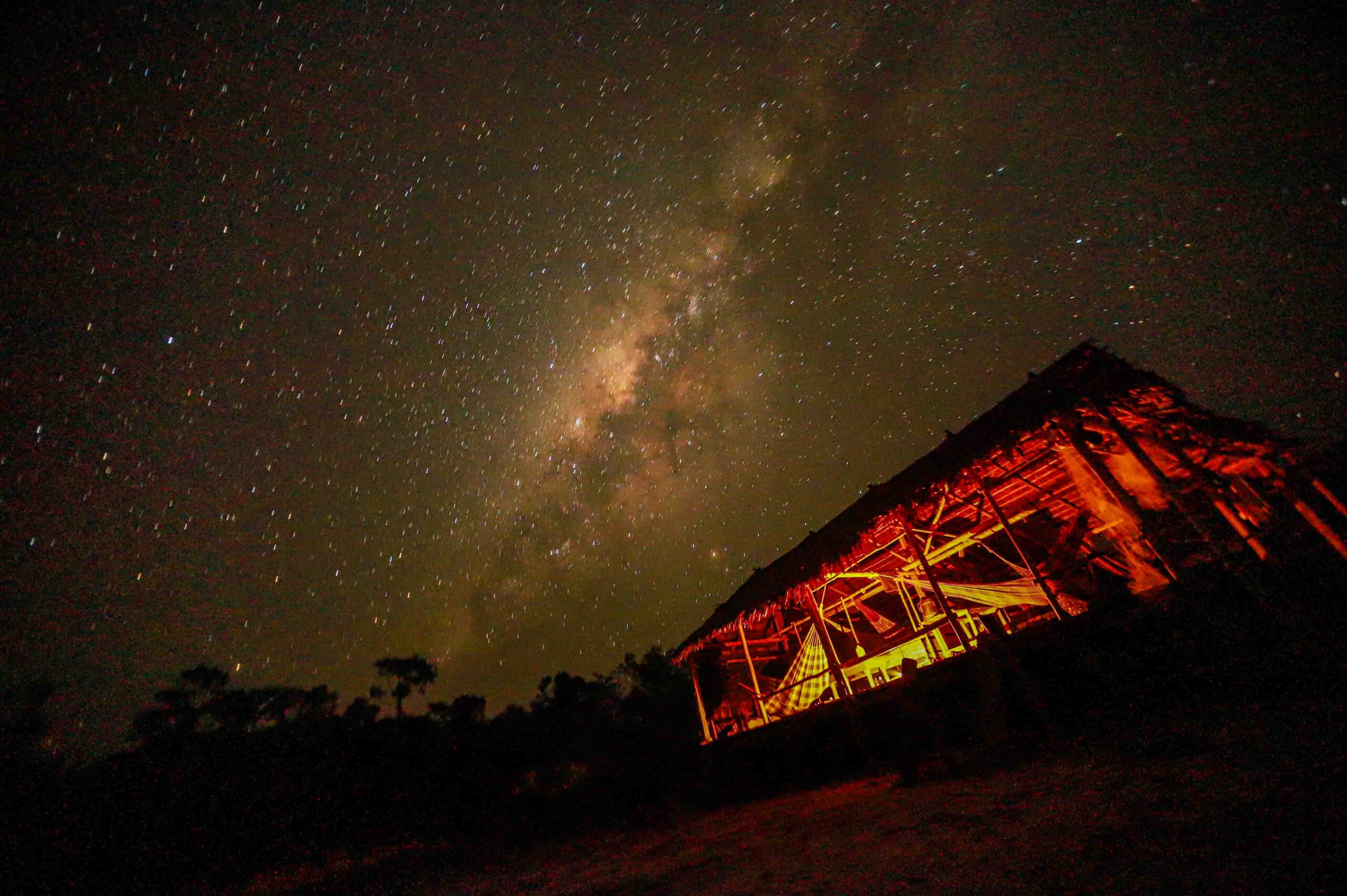 Traditional Apurinã housing at Bom Jesus village, which, like other villages in the Seruini territory, has no electricity or internet services. Image courtesy of Ramon Aquim/InfoAmazonia.
Traditional Apurinã housing at Bom Jesus village, which, like other villages in the Seruini territory, has no electricity or internet services. Image courtesy of Ramon Aquim/InfoAmazonia.
The villages of the Seruini Stream have no electricity or internet services. According to the Indigenous people, the lack of basic facilities was crucial for Meira Penna and his staff to promise improvements to the communities, such as better health care and schools for the youth. The first contacts took place in 2021, during the pandemic, and were authorized by FUNAI under the administration of former President Jair Bolsonaro (PL), violating the agency’s own rules that prohibited non-Indigenous people from entering communities due to COVID-19.
“They said they were coming to help us; they took photos of the nut trees to check the production, but when they came back, they were telling a whole different story,” Chief Kaiaxi said.
In fact, the Indigenous people were never properly consulted about the company’s plans, much less did they know that the lands they inhabited were being sold as NFTs that promised to preserve the Amazon.
According to the prosecutors, the lack of prior, free and informed consultation as provided for in Convention 169 of the International Labor Organization (ILO) “shows alleged violations of the rights of communities,” which led to an investigation started in July 2022.
ILO Convention 169 provides for the right to consultation on any project that interferes with Indigenous lands. Regardless of whether or not the territory has already been officially recognized, the entire recognized Indigenous community must be aware of what is being proposed and has the right to approve the project or not. The matter must be discussed internally by the Indigenous people, with the adoption of a consultation protocol that allows everyone in the territory to have access to information about the projects.
To the Prosecution Service, Nemus said the property was not on “actually demarcated Indigenous land,” and therefore the company’s understanding was that “no article of ILO 169 convention on consultation applies.”
In the same document from August 2022, Nemus said it was not yet developing economic activities in the area. However, at the time, the company had already launched its NFTs on the market, for which sales began in March 2022.
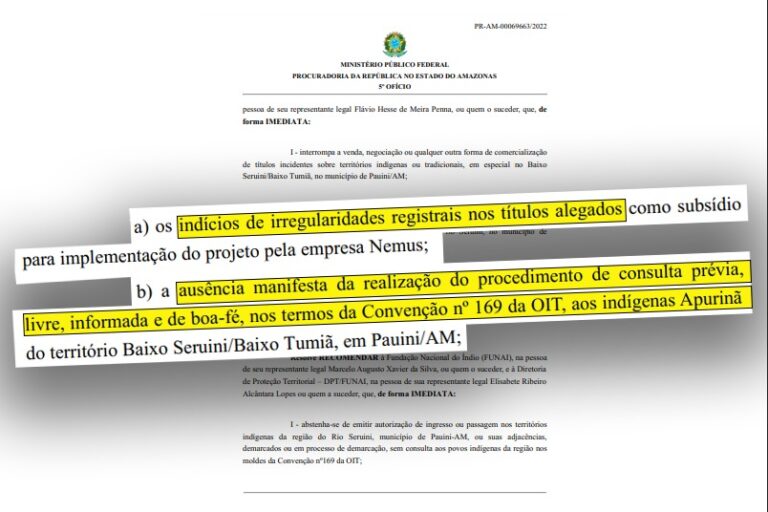 The Prosecution Service’s order to open an investigation points out lack of prior consultation and signs of irregularities in land titles. Image is a reproduction/MPF.
The Prosecution Service’s order to open an investigation points out lack of prior consultation and signs of irregularities in land titles. Image is a reproduction/MPF.
Company changed name of Indigenous land to NFT
According to information from Indigenous people who live in the area, Nemus managed to persuade the chief of one of the villages to accompany representatives of the company to the municipal notary office in Pauini and change the name of the area the company claims to own to “NFT.” Other Indigenous people told InfoAmazonia they had only become aware of the change after it had taken place, without the knowledge of the other chiefs and the community. In an institutional video made by Nemus itself, it is possible to see that the Indigenous man who signed the document used his thumb, which indicated that he could not write. He did not want to speak with the reporters.
With the change, the entire area that Nemus claims to own, including Kamarapa and Penedo villages, is now called Non Fungible Territory (NFT).
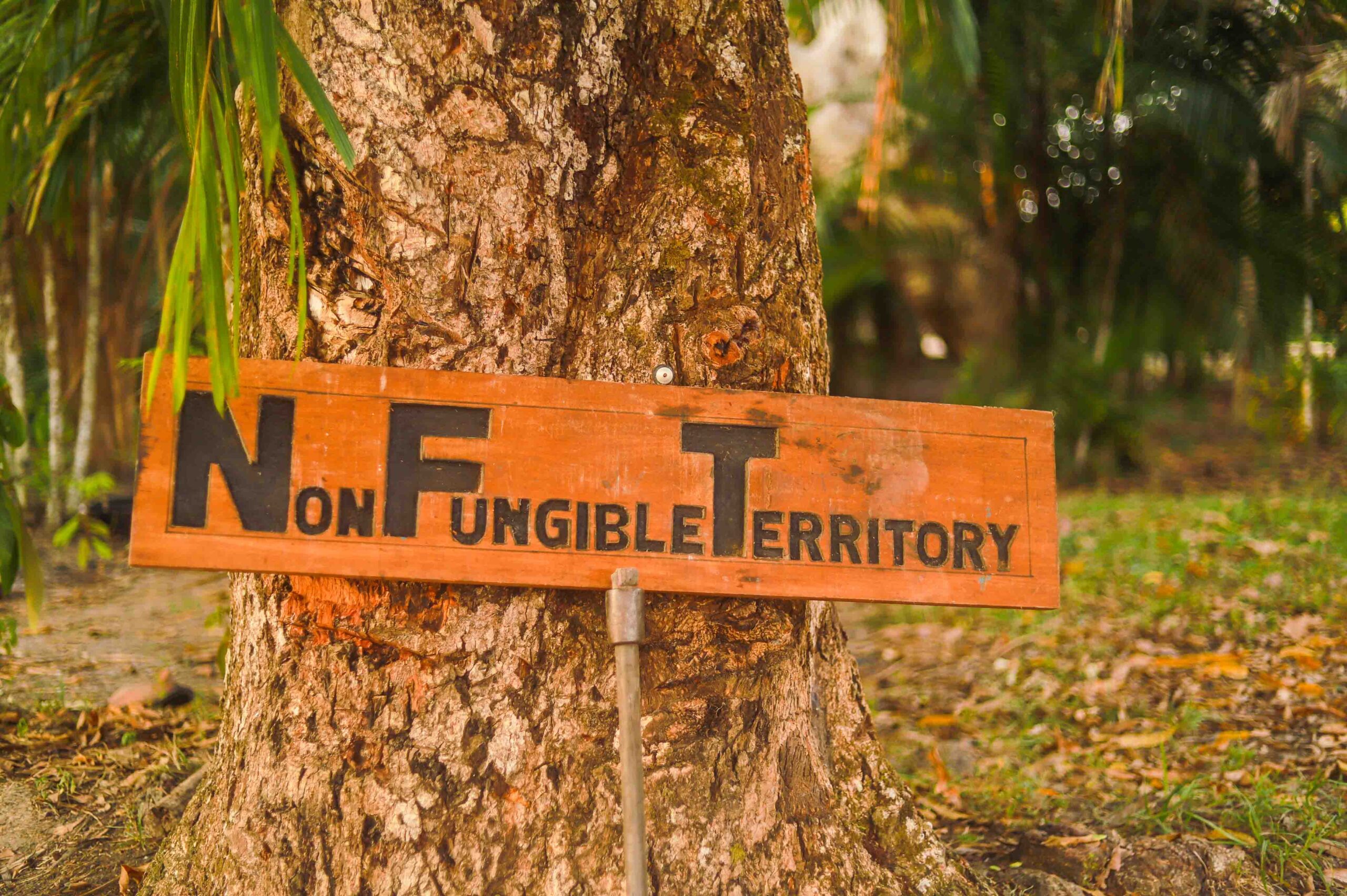 Sign in the village of Penedo, Lower Seruini/Lower Tumiã Indigenous Land. Image courtesy of Ramon Aquim/InfoAmazonia.
Sign in the village of Penedo, Lower Seruini/Lower Tumiã Indigenous Land. Image courtesy of Ramon Aquim/InfoAmazonia.
Chief Teixeira de Sousa Lopes Apurinã from Kamarapa village, which is close to Penedo, complained about lack of transparency on the part of Nemus and said the company arrived in the area offering help, but never spoke about how the NFT project would work.
“They came here, recorded a video with us and handed over a sign, but they never really explained the project; they just told us they’d help us,” he said, pointing out that, because of their needs, the Indigenous people accepted help from the company.
“I made a list of things we needed — machetes, sharpeners — and I said we needed improvements at the local school, internet … but not so that we’d be bossed around by them,” said Teixeira.
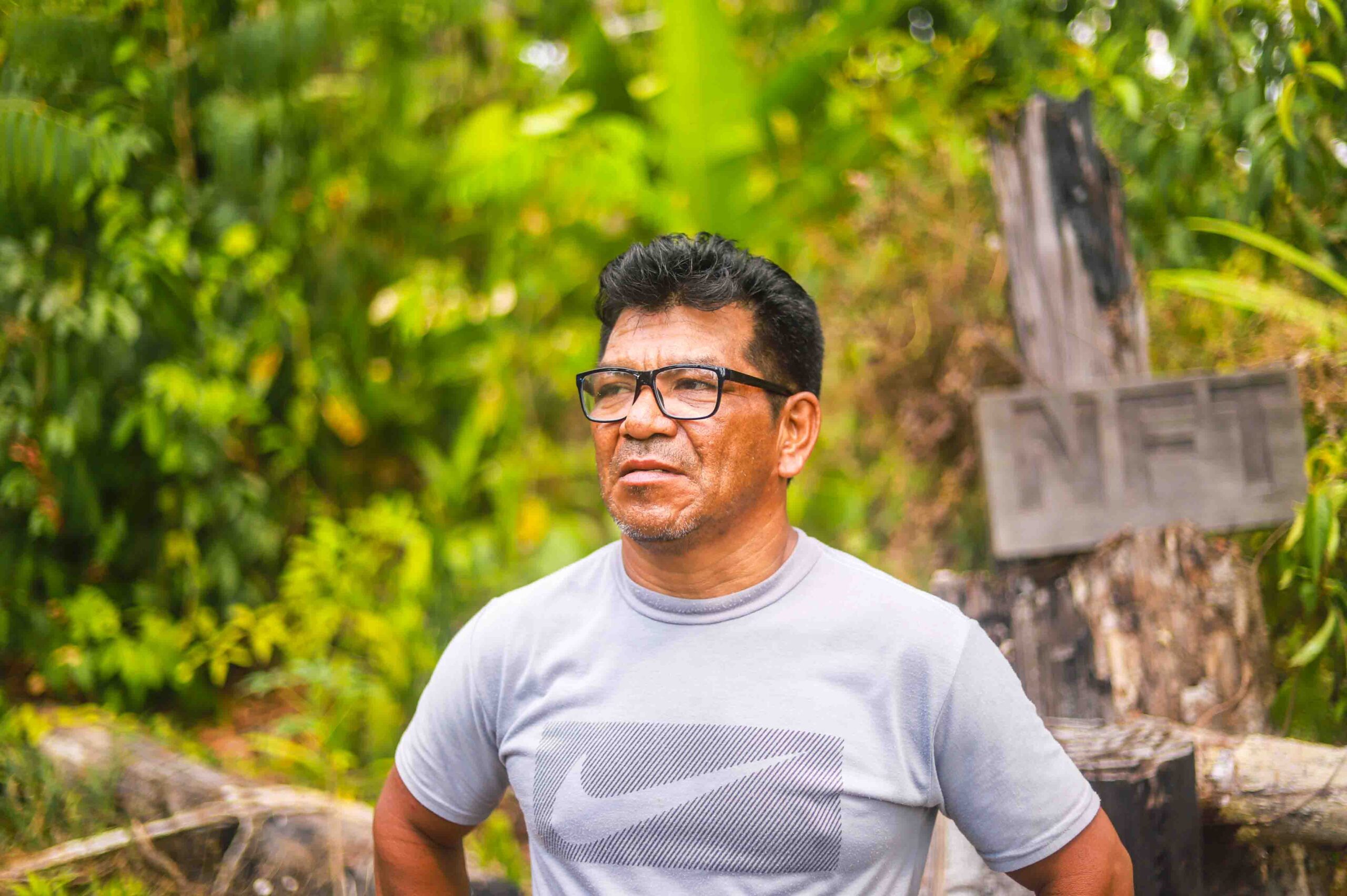 Chief Teixeira says Nemus was in the community, handed over a sign with the acronym NFT engraved on it and never appeared in the region again. Image courtesy of Ramon Aquim/InfoAmazonia.
Chief Teixeira says Nemus was in the community, handed over a sign with the acronym NFT engraved on it and never appeared in the region again. Image courtesy of Ramon Aquim/InfoAmazonia.
“We’d like the governments themselves to recognize our situation. My grandfather was a chief, my brothers are chiefs, I’m the chief of this village, but we feel forsaken. We are not asking; we are demanding something that is rightfully ours. We own this place, we came from this land,” the leader added.
As a way of protecting themselves and reinforcing traditional land use, the Apurinã created an ethno-environmental map where they located important points of community use, such as nut groves, areas of clay collection for ceramics, hunting areas and waterfalls, for example. Each village mapped its perimeter of use, which formed the area required for final demarcation of the territory.
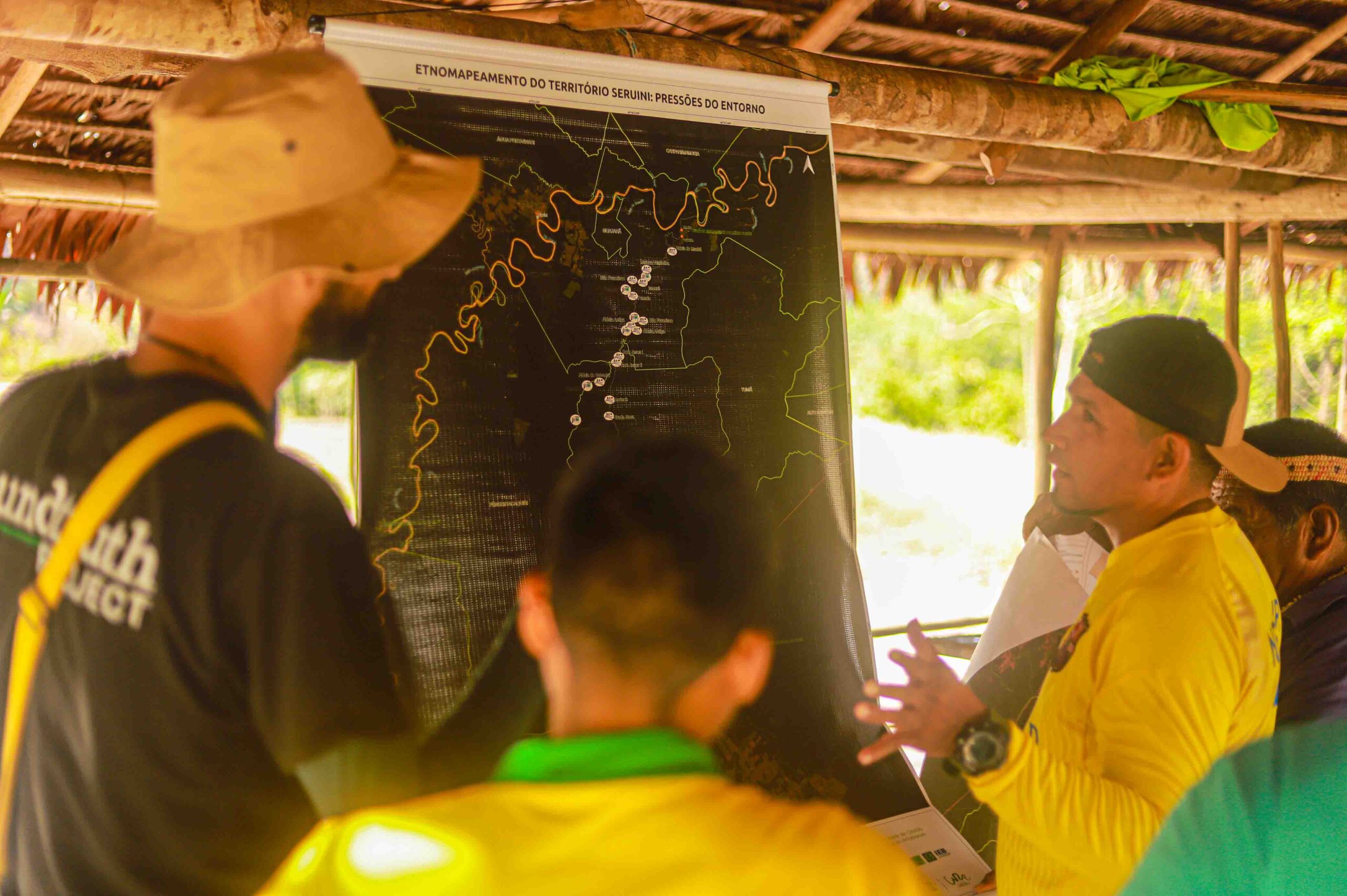 Bom Jesus village community members identify areas of Indigenous territory on ethno-environmental maps, where they located important points of use and pressure from the surrounding area. Image courtesy of Ramon Aquim/InfoAmazonia.
Bom Jesus village community members identify areas of Indigenous territory on ethno-environmental maps, where they located important points of use and pressure from the surrounding area. Image courtesy of Ramon Aquim/InfoAmazonia.
 Bom Jesus village community members identify areas of Indigenous territory on ethno-environmental maps, where they located important points of use and pressure from the surrounding area. Image courtesy of Ramon Aquim/InfoAmazonia.
Bom Jesus village community members identify areas of Indigenous territory on ethno-environmental maps, where they located important points of use and pressure from the surrounding area. Image courtesy of Ramon Aquim/InfoAmazonia.
176,000 reais ($35,700) in an NFT from the Gênesis project
Each NFT from the Gênesis project is represented by a virtual card with the image of what exists in the area acquired, such as jaguars, sloths, king vultures, toucans, trees and fruit. The card informs the size of the area and its geographic coordinates.
Among the project’s 1,482 NFTs found within the land of the Apurinã, Gênesis’ tokens were traded on specialized platforms such as Coin Base NFT,LooksRare and OpenSean. Prices are quoted in cryptocurrencies, ranging from $17-$603.
The highest transaction on a single NFT found by the reporters was worth 19.44 WETH, equivalent to 176,000 reais ($35,700) in current values of that cryptocurrency quoted Nov. 1, for an area equivalent to 89 hectares (220 acres). The first sale of this specific token took place in February 2022, in a pre-sale operation. According to the company, the Gênesis collection was officially launched in March 2022.
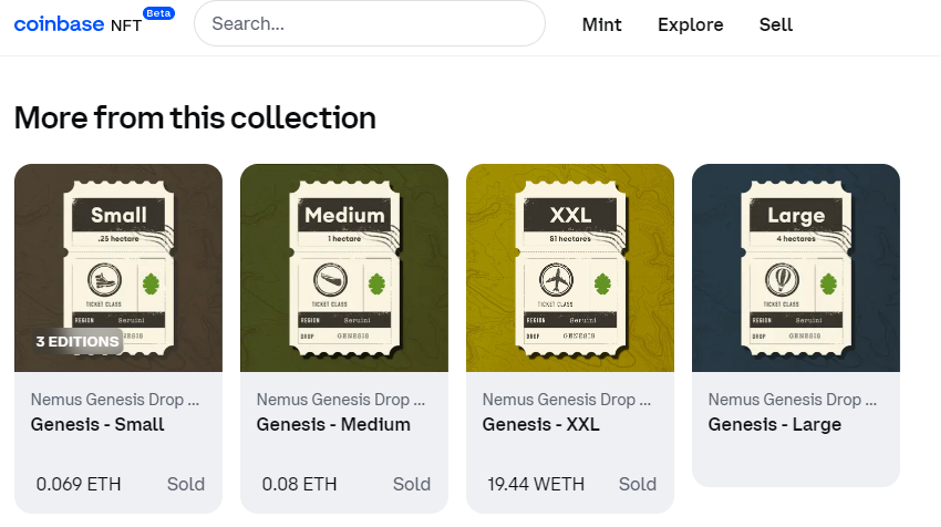
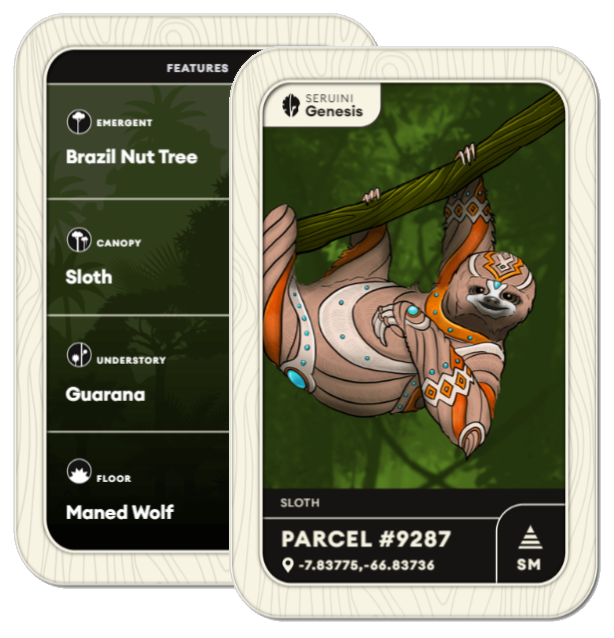
Images are reproductions/Nemus website.
In May, for the first time, Nemus publicly admitted that “there is a dispute” in the Gênesis project area, which was “temporarily suspended and will be resumed with a new property in the Pauini region.” In the same statement, the company said it was negotiating areas with the Xerente Indigenous people from Tocantins.
The areas in Pauini to which the company referred would be adjacent to the current project and, according to the Indigenous people themselves, are also part of the Apurinã territory.
In the statement, the company said the problem involved “the owners” with whom they had “an irrevocable agreement to purchase the property.”
The information is on a Nemus blog on the Medium platform. On the company’s official website, there is no mention of the suspension of the project or what will be done with those who have already purchased NFTs.
Although the sale of NFTs from the Gênesis project appears unavailable on the Nemus website, on the Ethereum platform, which records token deals, it is possible to find recent NFT negotiations that point to Indigenous lands, which is against the Prosecution Service’s recommendations.
Read also: Company linked to Shell is accused of violating indigenous rights in carbon credit contracts
Nemus insisted, but FUNAI denied entry into territory
In January this year, FUNAI’s new management interrupted its contact with Nemus that had begun during the Bolsonaro administration. According to the agency, “the lack of regulation of NFTs in the country is a problem,” especially because the territory is still in the process of demarcation, “creating legal uncertainty in an area with a history of persistent embezzlement involving Madeireira Nacional S.A. (Manasa) and conflicts with non-Indigenous people,” FUNAI said in a statement.
The agency claims that, as of January this year, Nemus still “insisted on holding meetings with the Apurinã,” but the request was denied.
In December 2022, the Prosecution Service recommended halting “sales or negotiation” of the Nemus project. The agency also recommended that FUNAI refrain from “authorizing entrance into or crossing Indigenous territories.”
According to the prosecutors, “treating Indigenous peoples who have been claiming their territorial rights for decades — with demarcation procedures underway at FUNAI — as squatters shows, at the very least, lack of respect for the rights claimed by those peoples and guaranteed by the Constitution,” as stated in the recommendation issued by Prosecutor Fernando Merloto, which also said that “in case of failure to comply with the measures, beneficiaries and management will be held responsible for their commissive or omissive conduct.”
Given the evidence that areas of the Indigenous territory were sold as NFTs, contrary to what Nemus informed the prosecutors, FUNAI said it would denounce it to the Prosecution Service “as soon as it obtains proof of these virtual sales.” InfoAmazonia shared the data from the investigation with the prosecutors, who promised to comment on the case soon.
Nemus and SFA did not respond to our emails requesting clarification until this publication was closed. We were unable to contact businessmen Meira Penna and Totta.
Persecution cycles
Madeireira Manasa arrived in the Lower Seruini region in the 1970s, during Brazil’s military dictatorship and obtained a document from FUNAI saying were no Indigenous villages in the area, which disregarded the presence of the people who already lived there.
During that period, more than 800 non-Indigenous people were taken to the Lower Seruini region, triggering conflicts. It was at this time that José Lopes Apurinã was murdered during an ambush. He was the grandfather of Chief Dário Lopes Apurinã, known as Kacuiry, from the village of Bom Jesus. The conflict left several people injured. One of the chief’s brothers still lives with permanent injuries.
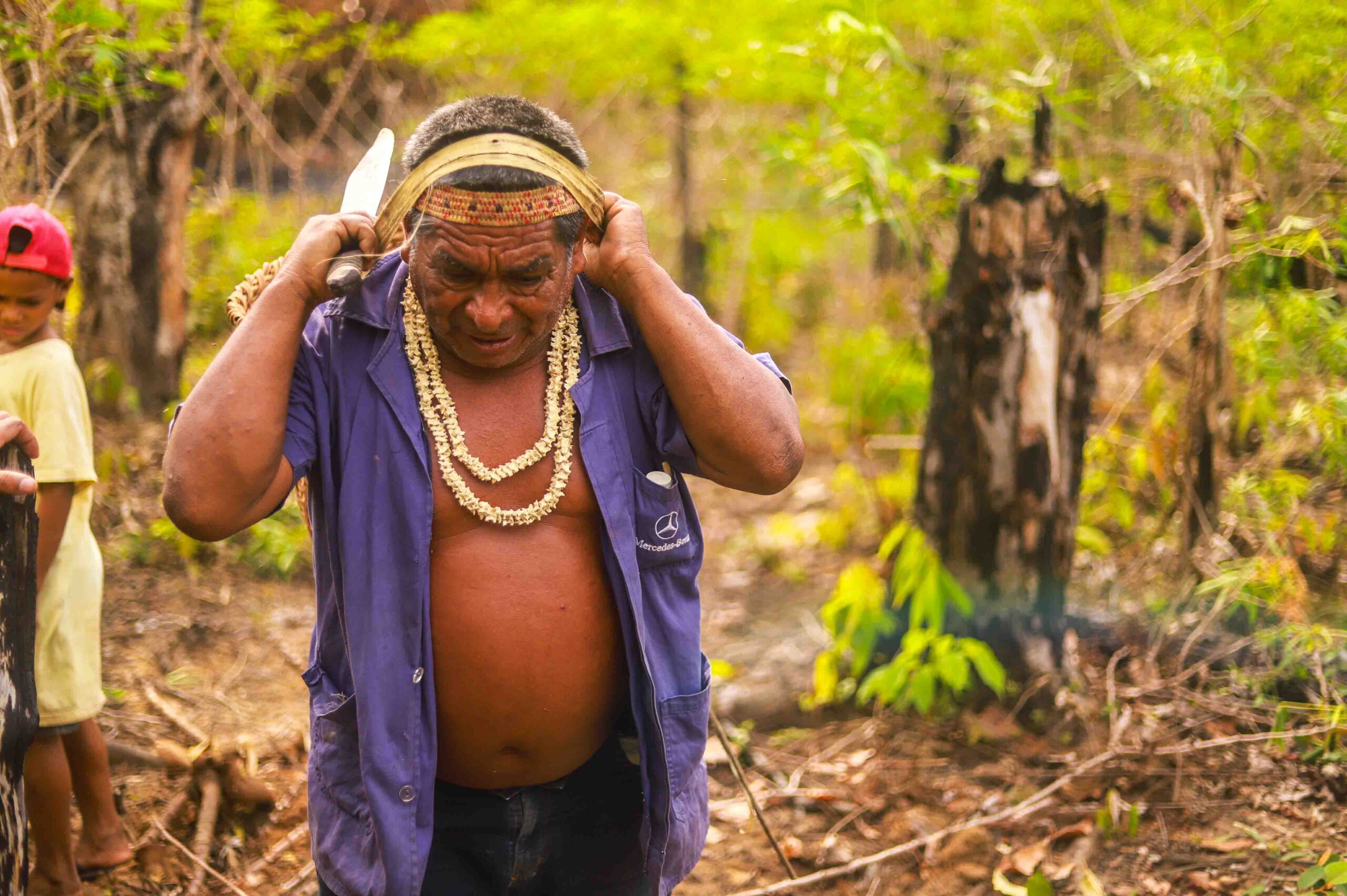 Chief Dário Lopes Apurinã, also known as Kacuiry, from Bom Jesus village. Image courtesy of Ramon Aquim/InfoAmazonia.
Chief Dário Lopes Apurinã, also known as Kacuiry, from Bom Jesus village. Image courtesy of Ramon Aquim/InfoAmazonia.
The first contacts with the Apurinã took place in the 18th century, during the race forforest commodities – cacao, copaiba oil, turtle butter. In the following century, the rubber cycle exposed the violence. To escape, the Apurinã remained in more hidden areas of the forest, close to streams. This allowed some groups to stay completely isolated as they wanted until the 1940s, when a new rubber cycle intensified with the “rubber soldiers” during World War II.
When Manasa arrived, Kacuiry recalled, once again the Apurinã were cornered. “A lot of people came; they stayed here killing game and our fish. When they built the farm, things got ugly for us. They said we weren’t entitled to anything, and we fought back,” he recalled.
Despite their family and cultural connections with the others in the Lower Seruini area, Bom Jesus village is located within the Seruini/Marienê Indigenous land, where in 1914 there was already a post of the Indian Protection Service (SPI), installed to appease disputes between Indigenous people and rubber tappers. The area was closed for studies in 1986 and officially approved in 2000. But the communities in the lower part of the stream were left out of the studies.
According to FUNAI reports, most communities in the Lower Seruini area descend from the marriages of old Jacinto with three sisters originally from the Tumiã River region. Therefore, the areas of the Lower Seruini and Lower Tumiã are currently occupied by related families. Despite being dispersed, according to researchers, this group forms an Apurinã occupation network in the area of Igarapé Seruini.
__________
This report is part of the series “Money that grows on trees: Financialization of the forest puts pressure on Indigenous lands,’ produced by InfoAmazonia with support from Journalismfund Europe, through Report for the World, and in partnership with Mongabay.
Banner image: Chief Kaiaxi from Penedo village, which has areas traded on the internet as NFTs. Image courtesy of Ramon Aquim/InfoAmazonia.
Carbon Credits, Carbon Emissions, Conflict, Greenhouse Gas Emissions, Indigenous Peoples, Indigenous Rights, Rainforests, Tropical Forests
NFTs
RTFKT Announces Project Animus Reveal, Launches Egg Unboxing Event Amid Mixed Reactions | NFT CULTURE | NFT News | Web3 Culture
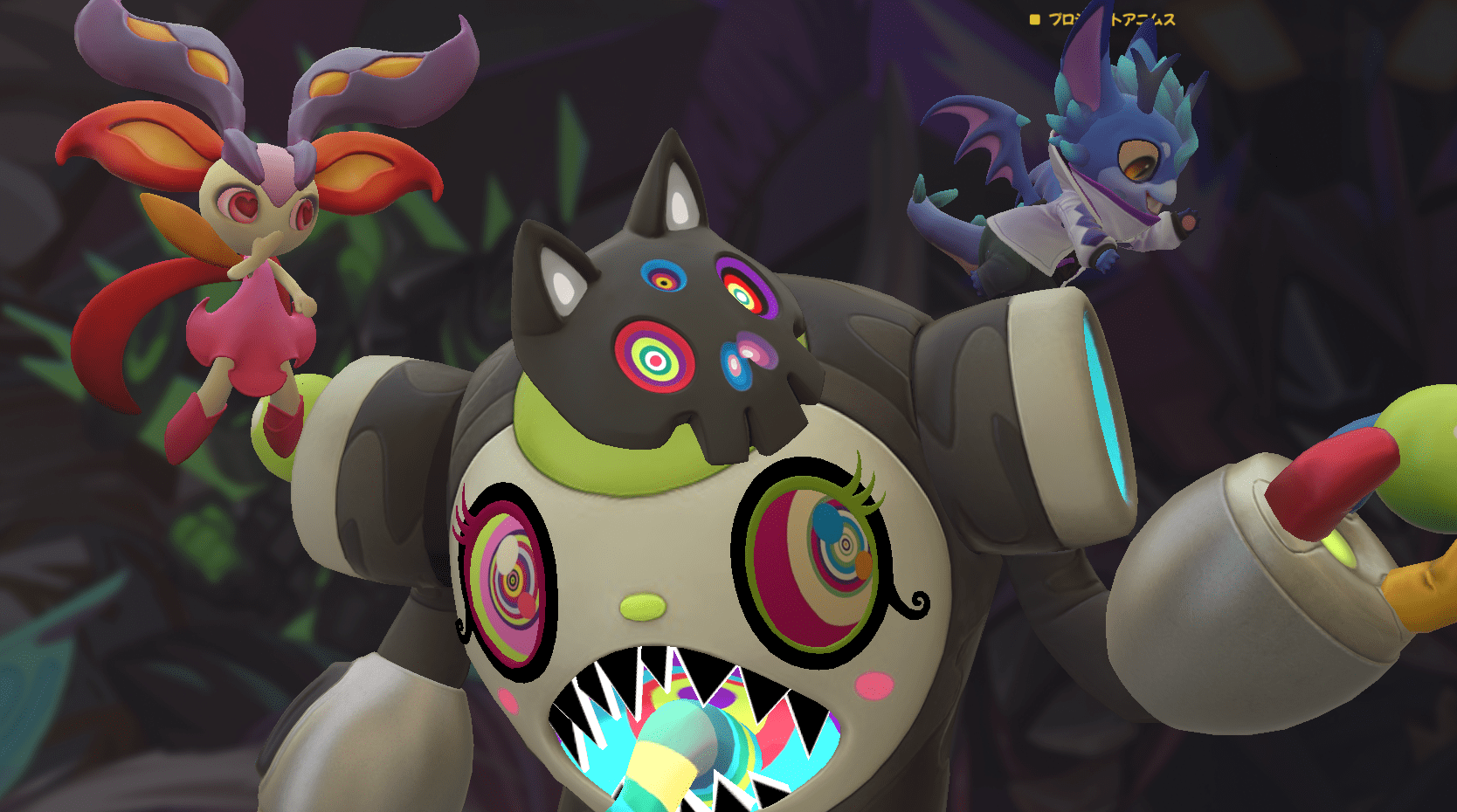
RTFKT, the innovative creator-led company renowned for its cutting-edge sneakers and metaverse collectibles, has officially unveiled its highly anticipated collection, Project Animus. This project marks a significant milestone in RTFKT’s journey, introducing a new dimension to its digital universe after a long period of development. However, the initial market response has been disappointing, with the revealed Animi trading at a floor price of 0.05 ETH, significantly lower than the eggs’ floor price of 0.09 ETH.
The Genesis of the Project Animus
Initially introduced in October 2022, Project Animus introduces a unique ecosystem of digital creatures called Animi. These Animi are designed to enhance Clone X’s avatars, offering an immersive and engaging experience for the community. The recent reveal showcased a diverse range of Animi species, each with distinct design traits and elemental attributes, breaking away from traditional trait-based rarity systems.
A New Digital Frontier: The History and Evolution of Project Animus
The Animus Project is RTFKT’s latest intellectual property, promising to revolutionize the NFT space with its unique digital creatures. The journey kicked off on October 8, 2022, with an interactive teaser event called “The Eggsperience.” This livestream event allowed attendees to explore a virtual Animus Research Facility, generating intrigue and excitement among the community.
Renowned artist Takashi Murakami played a significant role in the project, revealing the first Murakami-themed Animus creature, Saisei, on April 30, 2023. This collaboration added a layer of artistic prestige to the project, further elevating its status within the NFT community.
Animus Egg Incubation: A Journey from Egg to Animi
Clone X NFT holders had the opportunity to claim an Animus Egg until March 1, 2024. This was followed by the Animus Egg Hatching event, which ran from May 7 to June 4, 2024. During this period, holders of several RTFKT NFTs, including Clone X, Space Pod, Loot Pod, Exo Pod, and Lux Pod, were able to use a points-based system to increase their chances of hatching rarer Animi. The limited supply of Project Animus Eggs is capped at 20,000, with no public sale planned.
Mixed market reception
Despite the excitement and innovative features, the market reaction to the reveal of Project Animus has been lukewarm. Animi is currently trading at a floor price of 0.05 ETH, significantly lower than the eggs’ floor price of 0.09 ETH. This discrepancy has led to disappointment among some collectors who had high expectations for the project.
What Awaits Us: The Future of Project Animus
Following the reveal, RTFKT plans to release a collection of exclusive Animus Artist Edition characters. Holders of Clone X Artist Edition NFTs are guaranteed to get one of these special editions. The distribution will include 88 Special Edition Animus, with 8 Mythic (Dragon Sakura), 40 Shiny, and 40 Ghost Animus. The odds of receiving a Special Edition Animus are the same for all Eggs hatched, regardless of the points accumulated.
The remaining Animus characters will be distributed among unhatched Eggs, encompassing Special Edition Animus, as well as Cosmic Animus and Murakami Element from Generation 1, Generation 2, and Generation 3.
Conclusion
RTFKT’s Project Animus represents a bold step forward in the NFT space, combining cutting-edge technology with artistic collaboration to create an immersive and innovative digital ecosystem. However, the initial market reception highlights the challenges of living up to high expectations in the ever-evolving NFT landscape. As the project continues to evolve, it promises to deliver unique experiences and opportunities for its community, solidifying RTFKT’s position as a leader in the metaverse and digital collectibles arena.
Summary: RTFKT has unveiled Project Animus, introducing a unique ecosystem of digital creatures called Animi designed to enhance Clone X avatars. Despite the excitement, market response has been mixed, with Animi trading at a lower floor price than eggs. The project kicked off with an interactive event in October 2022, featuring collaborations with artist Takashi Murakami. Following the reveal, RTFKT will release special edition Animus characters. The total supply of Animus Eggs is limited to 20,000, with no public sale planned.
NFTs
The Olympics have reportedly ditched Mario and Sonic games in favor of mobile and NFTs
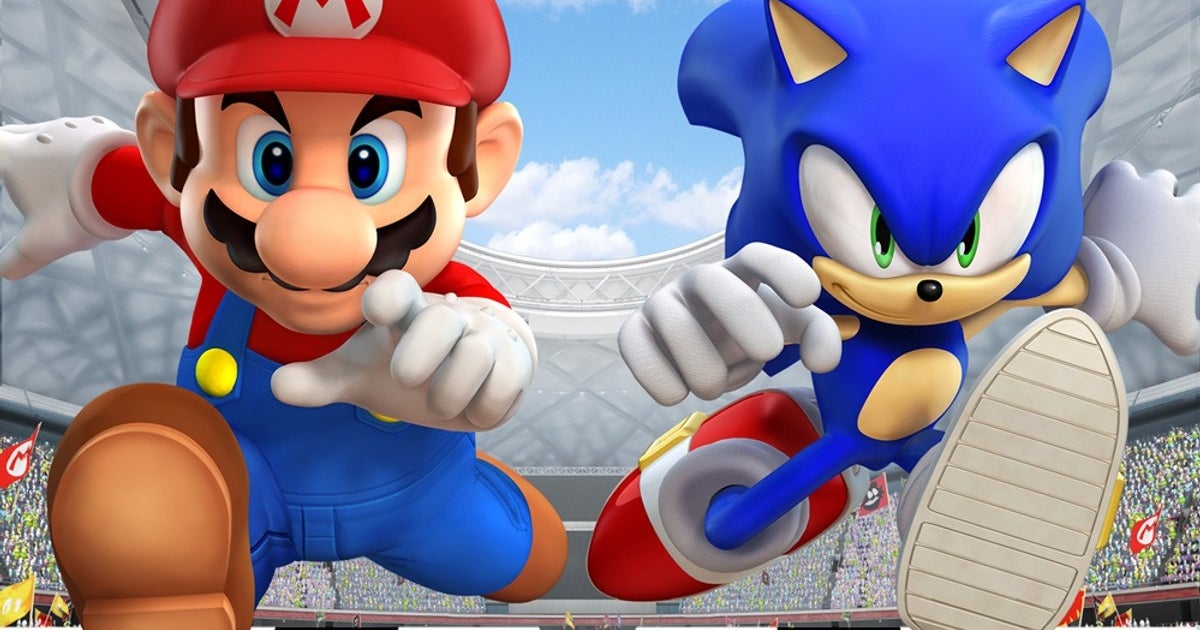
The long and historic partnership between Nintendo and Sega to create video games for the Olympics reportedly ended in 2020 as event organizers sought opportunities elsewhere.
Lee Cocker, who served as executive producer on several Mario & Sonic Olympics titles, said Eurogamer the International Olympic Committee let the licensing agreement lapse because it “wanted to look at other partners, NFTs and esports.”
“Basically, the IOC wanted to bring [it] “Turn inward and look for other partners so you can get more money,” Cocker added.
The 2024 Summer Olympics kicked off in Paris last week, but there were no Mario & Sonic games available in time for the event to begin – the first time this has happened since the original release in 2007 to coincide with the 2008 Beijing Summer Olympics.
Over the past two decades, there have been four Mario and Sonic adaptations for the Summer Olympics, as well as two for the Winter Olympics.
This year, instead of a Nintendo/Sega title, the IOC released Olympics Go! Paris 2024, a free-to-play mobile and PC title developed by nWay, which has worked on several Power Rangers games.
Olympics Go! allows players to compete in 12 sports and unlock NFTs from the Paris 2024 digital pin collection.
The original Mario & Sonic at the Olympic Games was announced in March 2007 and marked the first time the two mascots – once archrivals in the console wars of the 1990s – appeared together in a game.
NFTs
DraftKings abruptly shuts down NFT operation, leaving collectors panicking over vast holdings of digital tokens
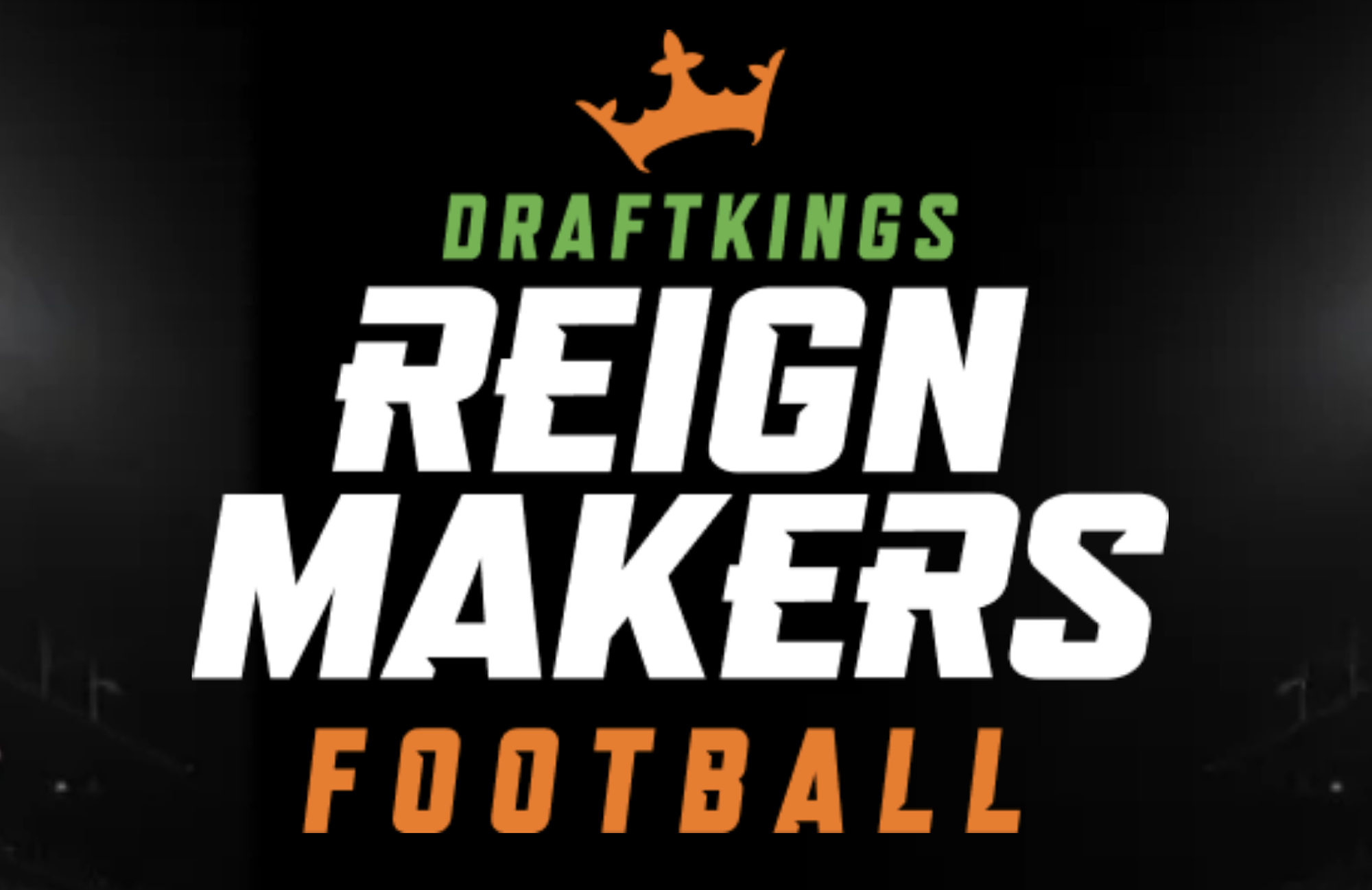
DraftKings, the daily fantasy sports and sports betting company, abruptly shut down a program called Reignmakers on Tuesday, posting a notice on its website and associated app and sending a mass email to some subset of its user base. Reignmakers, which the company launched in 2021, offered pay-to-play competitions in NFL football, PGA Tour golf and UFC mixed martial arts. The decision to eliminate the entire program, DraftKings says, was not made lightly but was forced “due to recent legal developments.”
DraftKings has yet to specify what “recent legal developments” are troubling its now-dead Reignmakers product. The company was sued in U.S. District Court in 2023 by a Reignmakers player named Justin Dufoe, who accuses the company of dealing in unregistered securities, taking advantage of relatively unsophisticated “retail investors,” and failing to market and support Reignmakers to the degree necessary to return to its users the financial benefits expected. DraftKings filed a motion in September to dismiss Dufoe’s complaint, but that motion was denied on July 2. A scheduling conference was held by the parties on July 29; Reignmakers was permanently shut down on July 30. A DraftKings spokesperson reached by Defector on Wednesday declined to confirm whether Dufoe’s complaint is the “recent legal development” that forced the company’s hand.
Users of the Reignmakers NFL product, who in recent days began murmuring on social channels about a notable lack of DraftKings activity so close to the start of the NFL preseason schedule, were caught off guard and, in some cases, devastated by the news. Members of the DraftKings Discord server, where all Reignmakers-related channels were abruptly shut down and locked following the announcement, flooded a general channel in various states of panic, sharing news, theorizing, lamenting, and, in some cases, openly worrying about whether it would be possible to recoup any decent fraction of the genuinely impressive sums of money they had invested in this DraftKings product.
Reignmakers is nominally a daily fantasy contest—users build lineups of players and then pit those lineups against other users’ lineups for cash prizes—but it’s actually a distributor of nonfungible digital tokens (NFTs), originated and sold by DraftKings, and then frequently resold on a dedicated secondary marketplace also hosted by DraftKings. At the lineup-building level, Reignmakers functions like a card-collecting game, with artificial scarcity driving the prices of the most coveted cards to insane, eye-popping heights. Reignmakers NFTs are tiered and offered in timed drops designed to heighten the sense of scarcity. A user can enter a lower-tier contest using a collection of NFTs that may have cost a few hundred dollars in total (or that were earned by purchasing random packs of NFTs that offer generally low odds of scoring top assets) and throw their lot in with hundreds of casual users competing for relatively unimpressive rewards. Random packs at the lowest tier would have prices as low as a few dollars; mid-tier cards—Star and Elite tiers, I’d guess—could cost a player upwards of $1,000.
But players interested in hunting down the biggest payouts, not just from games but from leaderboard prizes and other assorted prizes, would need to enter higher-tier games, and to enter the higher-tier games, a user’s collection needed to include higher-tier NFTs. DraftKings ensured that these cards were extremely scarce and could only be purchased directly on the marketplace at prices that any reasonable person would consider utterly insane.
For example, the highest-tier Reignmaker contests (called the Reignmakers tier, of course) have in the past been limited to listings with at least two of the highest-tier, rarest NFTs (also the Reignmaker tier) plus three NFTs from the second-highest tier (Legendary). NFTs at these tiers are expensive. Not just expensive in the way that, like, a steak dinner is expensive, but expensive in the way that buying even one of them should trigger a mandatory visit to a gambling addiction counselor, if not sirens and a straitjacket. Back in 2022a Reignmaker-level Ja’Marr Chase NFT from something called the Field Pass Promo Set could be purchased directly from the DraftKings Reignmaker Marketplace for a whopping $32,100.
Reignmakers users purchased NFTs at various levels with the expectation that owning them would convey better odds of winning contests hosted on DraftKings. This was the gamification element of Reignmakers, which emerged several months after DraftKings began trading and minting its NFTs. But as with all NFTs, a very large part of the real appeal for its buyers was the expectation, however insane, that these worthless, virtually worthless, infinitely duplicable digital images would increase in value over time. Now that both the Reignmakers game and the Reignmakers marketplace have been shut down, Reignmakers NFT holders are worried that their investments may have suddenly lost all monetary value. One Discord user described Tuesday as “a bad day to wake up and realize you have $2,000 worth of unopened NFL Rookie Packs”; Another user asked the group if they should expect “a refund” on the $10,000 they’ve already spent on Reignmakers NFTs this year. A pessimistic Reddit user posted tuesday that they would sue DraftKings if they were forced to take a total loss on a Reignmakers NFT collection worth approximately $100,000.
The game (scam?) was built to make numbers like these not only possible, but somewhat easily achievable. A user who intended to compete from a position of strength in multiple overlapping high-profile contests at the same time, and who had been in the blockchain madhouse for a period of years, could easily have spent six figures on Reignmakers NFTs. DraftKings used non-gaming incentives to entice players to spend more and more money, much like casinos give away free suites to players who over-bet on blackjack. Another Reddit user lamented the loss of the additional prizes and ranking bonuses he had hoped to earn in the upcoming NFL season by having a portfolio of NFTs that had reached the highest levels of value and prestige. “I was already loaded up on 2024 creation tokens and rookie debut cards,” said this Reignmakers userwho claimed his portfolio was finally “close to the top 250 overall.”
Dufoe’s complaint says the NFTs minted by DraftKings for Reignmakers qualify as securities, function like securities, and should be regulated as securities. In its motion to dismiss, DraftKings attempted to position its NFTs as game pieces — eye-wateringly expensive, yes, but essentially the same thing as Magic: The Gathering cards or Monopoly hotels. The court, in resolving these arguments, applied what’s known as “the Howey test,” referencing a case from 1946 in which the U.S. Supreme Court established a standard for determining whether a specific instrument qualifies as an investment contract. Judge Dennis J. Casper, in ruling against DraftKings’ motion, concluded that Dufoe could plausibly argue that Reignmakers’ NFT transactions represent “the pooling of assets from multiple investors in such a manner that all share in the profits and risks of the enterprise,” arguing that DraftKings’ absolute control over the game and marketplace effectively binds the financial interests of the company and the buyers, the latter of whom depend on the viability of both for their NFTs to retain any value.
Reignmakers users are different from Monopoly players in at least one crucial way: A person who buys a Monopoly board has no expectation from Hasbro that those little red and green pieces will appreciate in value. It’s a game! No matter what any hysterically conflicted party may say to the contrary, that’s not what NFT collecting is. DraftKings had been selling Reignmakers NFTs for months before they were gamified, and Dufoe, in his complaint, cites public comments made by DraftKings spokespeople that seem to explicitly position Reignmakers NFTs as assets with independent monetary value beyond their utility in Reignmakers contests. Judge Casper, in his ruling on the motion to dismiss, cites a Twitter account associated with a podcast run by DraftKings CEO Matthew Kalish, who in a tweet described NFTs as “the opportunity to invest in startups, artists, operations, and entrepreneurs all at once.” This is probably the kind of thing that NFT peddlers should stop saying. This advice assumes, of course, that NFTs will continue to exist as instruments on the other side of this and other lawsuits.
DraftKings has posted a worryingly sparse FAQ at the bottom of the your ad Tuesday, anticipating but largely failing to address questions from players who see this as yet another in a long line of brutal blockchain rug pulls. In a hilarious reversal of existing Reignmakers policy, Reignmakers users are now allowed by DraftKings to withdraw their Reignmakers NFTs from their DraftKings portfolios and into their personal NFT wallets, where those NFTs will have precisely zero value, to anyone, for the rest of all time. There’s also vague language about Reignmakers users having the option to “relinquish” their NFTs back to DraftKings in exchange for “cash payments,” subject to “certain conditions” and according to an as-yet-unspecified formula that will take into account, among other things, the “size and quality” of a player’s collection.
Reignmakers users are not optimistic. Those who claim to have been victims of other blockchain market crashes are warning their peers on Discord and Reddit to expect payouts that amount to pennies on the dollar; in the absence of any clarifying information, users are unsure whether cashing out their NFTs from Reignmakers to their personal NFT wallets, for reasons that completely pass any and all understanding, would effectively preclude the possibility of delivering these silly digital tokens back to DraftKings. It remains to be seen what exactly DraftKings has in mind with the “certain conditions” attached to the delivery process. There is much that has yet to be resolved. A DraftKings spokesperson contacted by Defector indicated that more time would be needed to answer a list of specific questions and issued a statement noting that it is “in DraftKings’ DNA to innovate and disrupt to provide the best possible gaming experiences for our customers.” The original complaint is embedded below.
Do you know anything about the demise of Reignmakers, either from the consumer side or from the DraftKings side? We’d love to hear from you. Get it in touch!
Recommended
NFTs
There Will Be No More ‘Mario & Sonic’ Olympics Because of NFTs
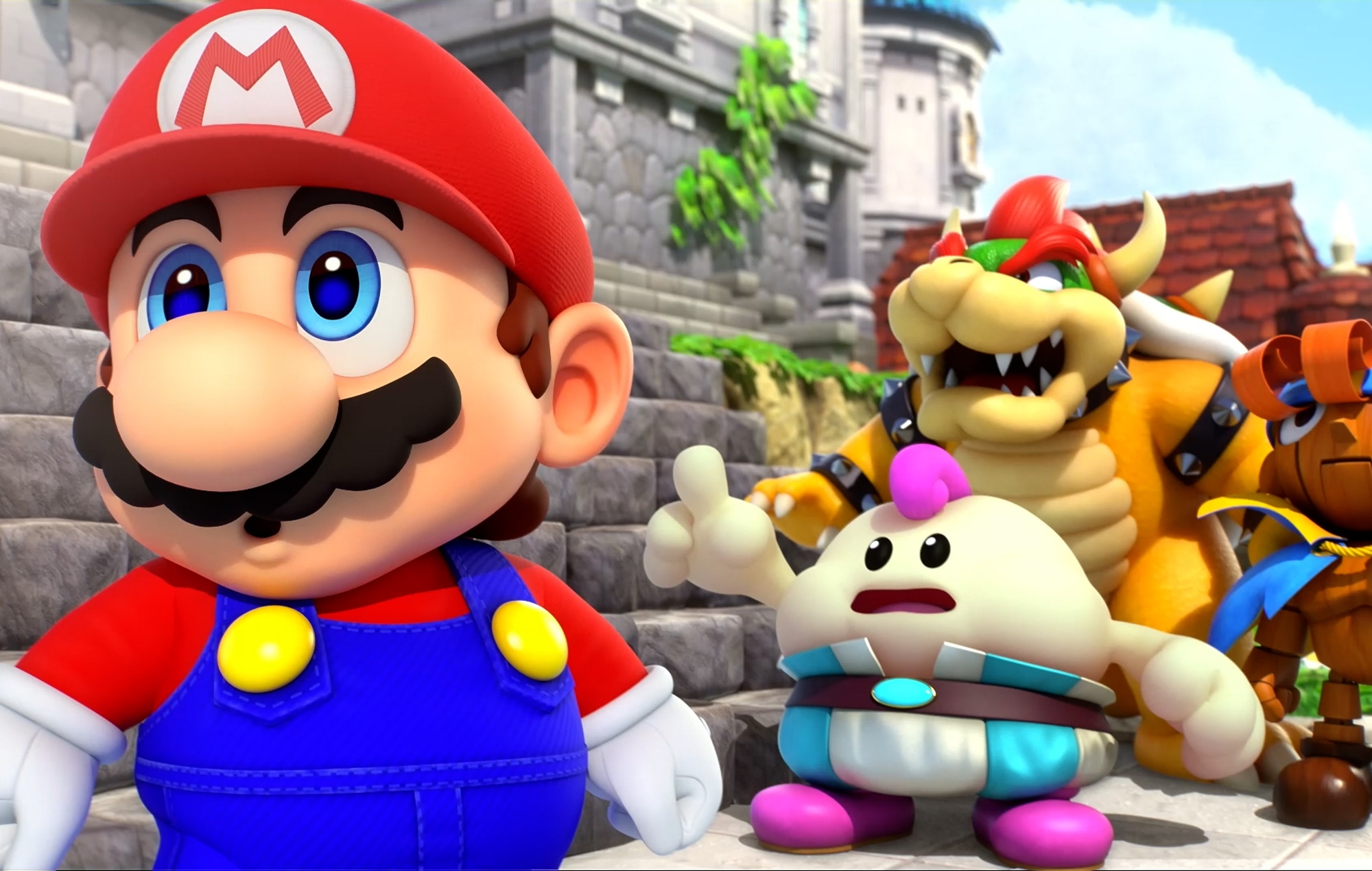
Nintendo and SEGA have been teaming up with the Olympics for several years now in the popular Mario & sonic in the Olympic Games series, but a new report claims the International Olympic Committee has abandoned the series in favor of new deals in eSports and NFTs.
According to Eurogamer“A veteran behind the series,” Lee Cocker, told the outlet that the IOC chose not to renew its license with SEGA and Nintendo, letting it expire in 2020. “They wanted to look at other partners and NFTs and eSports,” Cocker told Eurogamer. “Basically, the IOC wanted to bring [it] turn inward and look for other partners so they could get more money.”
Mario & Sonic at the Olympic Games is a series that has been running since 2008, with six main games covering the regular and Winter Olympics. In the games, players could control various characters from the Mario and Sonic franchises and compete in Olympic sporting events.
It’s no secret that NFTs are a big part of this year’s Paris 2024 Olympics. Olympics Go! Paris 2024 is a mobile and mobile-connected game your site states that players can “join the excitement of the Paris 2024 Olympic Games with nWay’s officially licensed, commemorative NFT Digital Pins collection honoring Paris 2024!”
As for eSports, Saudi Arabia will host the ESports Olympic Games in 2025. This is part of a partnership with the Saudi National Olympic Committee (NOC) that is expected to last for the next 12 years and is expected to feature regular events.
IOC President Thomas Bach said: “By partnering with the Saudi NOC, we also ensure that Olympic values are respected, in particular with regard to the game titles on the programme, the promotion of gender equality and the engagement with young audiences who are embracing esports.”
In other news, Someone claimed they’re suing Bandai Namco because Elden Ring is too difficult.
-
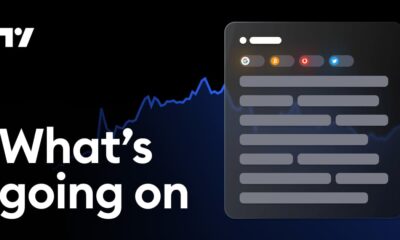
 News11 months ago
News11 months agoMore Crypto AI Alliances Emerge Following $7.5 Billion Token Merger — TradingView News
-
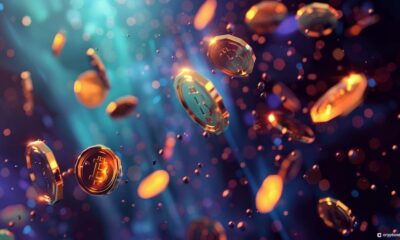
 News11 months ago
News11 months agoOver 1 million new tokens launched since April
-
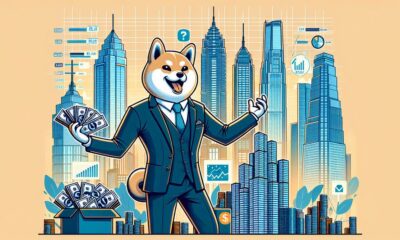
 Altcoins11 months ago
Altcoins11 months agoAltcoin Investments to create millionaires in 2024
-
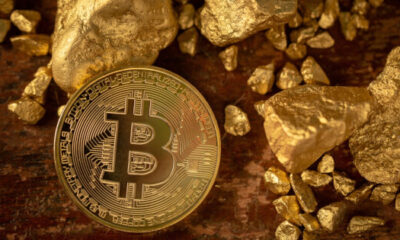
 Memecoins9 months ago
Memecoins9 months agoMemecoins dominate major derivatives in terms of open interest | Flash News Detail
-
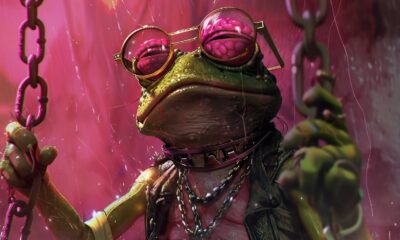
 News9 months ago
News9 months agoInvest Now: The Hottest New Cryptocurrencies of August 2024 That Could Skyrocket
-
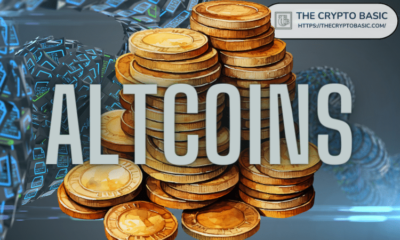
 Altcoins9 months ago
Altcoins9 months agoOn-chain data confirms whales are preparing for altcoin surge with increased buy orders
-
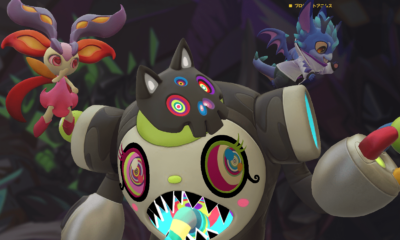
 NFTs9 months ago
NFTs9 months agoRTFKT Announces Project Animus Reveal, Launches Egg Unboxing Event Amid Mixed Reactions | NFT CULTURE | NFT News | Web3 Culture
-
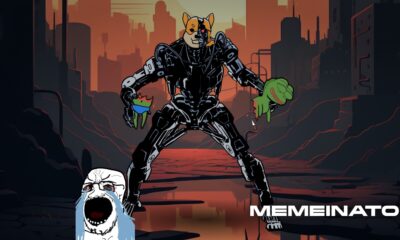
 Altcoins9 months ago
Altcoins9 months agoHot New Altcoin: Memeinator’s Price Upside Potential in July
-
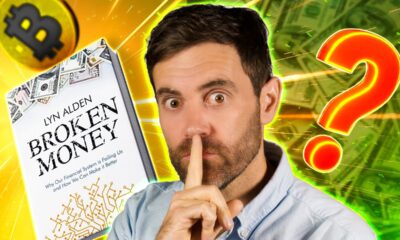
 Videos12 months ago
Videos12 months agoMoney is broke!! The truth about our financial system!
-
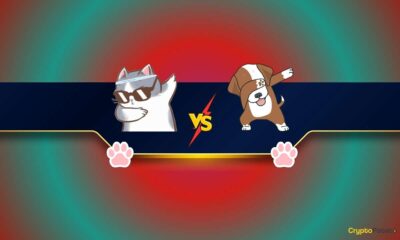
 Memecoins11 months ago
Memecoins11 months agoChatGPT Analytics That Will Work Better in 2024
-
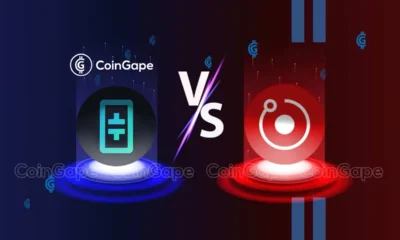
 Altcoins11 months ago
Altcoins11 months agoRender vs. Theta; Which DePIN Altcoin to buy in May
-

 News11 months ago
News11 months ago5 Crypto Airdrops After Notcoin to Watch Out for in June 2024





